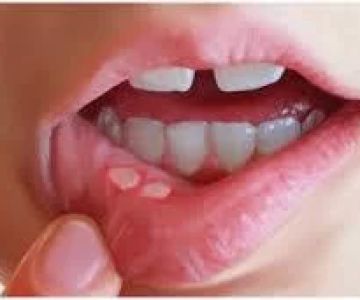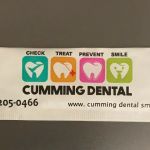What Are the Symptoms of Oral Thrush?
Oral thrush typically develops suddenly and one of the common signs is the presence of creamy white, slightly raised lesions in the mouth, usually on the tongue or inner cheeks. You might also find lesions on the roof of the mouth, gums, tonsils, or the back of the throat. Other symptoms can include redness and soreness inside and at the corners of the mouth, loss of sense of taste (ageusia), a cottony feeling in the mouth. The lesions can be painful and may bleed a little when scraped or when brushing teeth. In severe cases, the lesions can spread into the esophagus, causing pain or difficulty swallowing, a feeling that food gets stuck in the throat or mid-chest area, and even fever if the infection spreads beyond the esophagus. Oral thrush can also spread to other parts of the body, such as the lungs, liver, and skin, especially in people with weakened immune systems like those with cancer, HIV, or other conditions.
Who Is at Risk of Developing Oral Thrush?
While oral thrush can affect anyone, certain groups are more prone to it. Babies under 1 month old, toddlers, adults aged 65 or over, and people with weakened immune systems are at higher risk. Those with underlying health conditions such as diabetes, anemia, HIV/AIDS, cancer, dry mouth, pregnancy, or smoking, or ill-fitting dentures are also more likely to develop oral thrush.
What Causes Oral Thrush?
Most people have small amounts of the Candida fungus in their mouth, digestive tract, and skin. However, when illnesses, stress, or medications disrupt the natural balance, the fungus can grow out of control and cause oral thrush. Medications like corticosteroids, antibiotics, and birth control pills can contribute to yeast overgrowth and infection. Oral thrush can be contagious to those at risk, but in people with healthy immune systems, it's not common to pass it through kissing or other close contact.
How Is Oral Thrush Diagnosed and Treated?
A healthcare provider can usually diagnose oral thrush by visually inspecting the distinctive white lesions in the mouth. A microscopic exam of tissue from a lesion can confirm the diagnosis. If the thrush extends into the esophagus, additional tests like a throat culture, endoscopy, or X-rays of the esophagus might be conducted. The typical treatment for oral thrush is antifungal medications, which are available in various forms and usually need to be taken for 10 to 14 days. For those with weakened immune systems, the symptoms may be more severe and harder to treat.
How to Prevent Oral Thrush?
To lower the risk of oral thrush, it's essential to practice good oral hygiene, avoid certain mouth products, see a dentist regularly, limit foods that encourage Candida growth, and quit smoking if applicable. Special care should be taken for individuals with diabetes or those who wear dentures. For babies, proper hygiene and sterilization measures can help prevent the development of oral thrush.
What to Expect and When to Seek Medical Attention?
With treatment, oral thrush usually resolves within one to two weeks. However, if symptoms persist or worsen, it's important to inform the healthcare provider. If signs or symptoms of oral thrush develop, such as soreness, bleeding, or raised white areas inside the mouth, it's advisable to schedule an appointment. If antifungal treatment has been taken but symptoms return, immediate contact with the provider is necessary as it could indicate a more serious infection.
In conclusion, oral thrush is a fungal infection that can cause various uncomfortable symptoms in the mouth and throat. It can affect people of all ages, but certain groups are more vulnerable. Understanding the symptoms, causes, diagnosis, treatment, prevention, and prognosis of oral thrush is crucial for early detection and effective management. With proper care and timely medical intervention, most cases of oral thrush can be successfully treated and managed, allowing individuals to regain oral health and comfort.



 Kremers, Forbes and Associates DDS5.0 (689 review)
Kremers, Forbes and Associates DDS5.0 (689 review) VCC: The Gary Center2.0 (45 review)
VCC: The Gary Center2.0 (45 review) Hassan Ismail5.0 (1 review)
Hassan Ismail5.0 (1 review) Open Door Family Medical Center- Sleepy Hollow4.0 (215 review)
Open Door Family Medical Center- Sleepy Hollow4.0 (215 review) Cumming Dental Smiles: Bethelview Road4.0 (529 review)
Cumming Dental Smiles: Bethelview Road4.0 (529 review) CJ Dental4.0 (13 review)
CJ Dental4.0 (13 review) The Importance of Oral Health Education During Pregnancy for a Healthy Pregnancy
The Importance of Oral Health Education During Pregnancy for a Healthy Pregnancy Best Tips for Brushing Your Teeth Properly for Healthy Gums: Essential Techniques for Oral Health
Best Tips for Brushing Your Teeth Properly for Healthy Gums: Essential Techniques for Oral Health Why Skipping Dental Checkups Can Lead to Bigger Oral Health Problems
Why Skipping Dental Checkups Can Lead to Bigger Oral Health Problems Advantages of Porcelain Dental Restorations
Advantages of Porcelain Dental Restorations How Can Diabetes Cause Tooth and Gum Problems? Preventing and Managing Oral Health Issues
How Can Diabetes Cause Tooth and Gum Problems? Preventing and Managing Oral Health Issues Healthy Habits for Promoting Good Oral Health and Hygiene: Tips for a Healthy Smile
Healthy Habits for Promoting Good Oral Health and Hygiene: Tips for a Healthy Smile